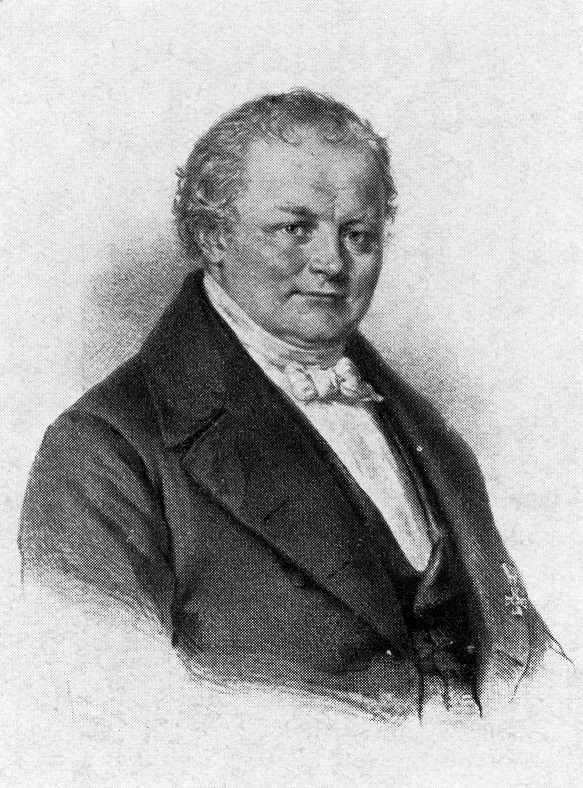He was born on September 29, 1787 in Malbork, he was the son of Friedrich August, a major in the Prussian army. In the years 1804-1806 he studied construction at the Gdańsk School of Fine Arts under Johann Adam Breysig. He took part in the Napoleon Wars, he was incorporated into the French army, mainly as a road builder on the battlefield. In 1813 he returned to Gdańsk and a year later found employment as a surveyor and builder at the construction of the port in Gdańsk’s Nowy Port. Although he was associated with the castle from 1819 until his death, he only worked there for a few years as a state employee. He was in charge of the local restoration matters, reporting directly to the construction counselor Carl Gottlob Hartmann from the Gdańsk regency. In 1831 he was delegated to the state administration as a road builder in the Malbork region. Three years later, he obtained the title of a road and dyke building inspector and in 1845 a well-deserved title of a higher building inspector. He also still lived in Malbork. He took an active part in the restoration of the Church of St. John and the town hall in Malbork’s Old Town and in 1838 he designed an Evangelical church in Nowa Cerkiew (Neukirch). New tasks did not prevent him from continuing his activities in the castle, where he was the head of the Reconstruction Board. He died on April 6, 1850 in Malbork.
The cooperation between Gersdorff and the Prussian President Theodor von Schön, lasting over 30 years, resulted in the first stage of restoration in the history of the castle, known as the romantic restoration, which officially began in 1817 and lasted until the mid-19th century. Three people were directly involved in this project: president Schön, architect Karl Friedrich Schinkel and August Gersdorff. According to the decisions made, only the Grand Masters Palace and the western wing of the Middle Castle with the Great Refectory were to be restored. The remaining parts of the Middle Castle were subject to government administration and the entire High Castle remained under military jurisdiction, acting as a war warehouse. The works, lasting from 1817, consisted in the liquidation of the reconstructions from the last quarter of the 18th century, when the interior of the Palace was transformed into a cotton factory and apartments for weavers and the west wing, during the Napoleon Wars, into a military hospital. The Summer and Winter Refectory and the rooms on the ground floor of the Palace were restored. New stained-glass glazing has been inserted everywhere, including designs by Schinkel and Gersdorff himself. The neo-Gothic furniture, partially preserved to this day, were placed inside.
(compiled by A. Dobry)

